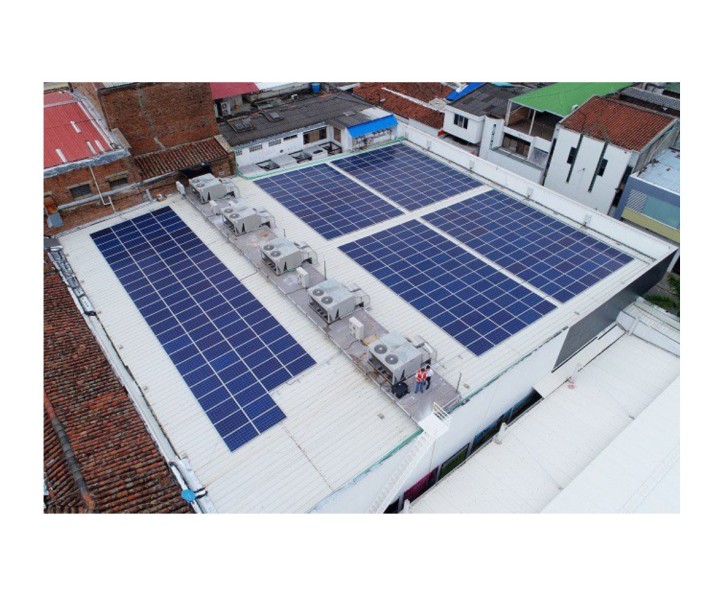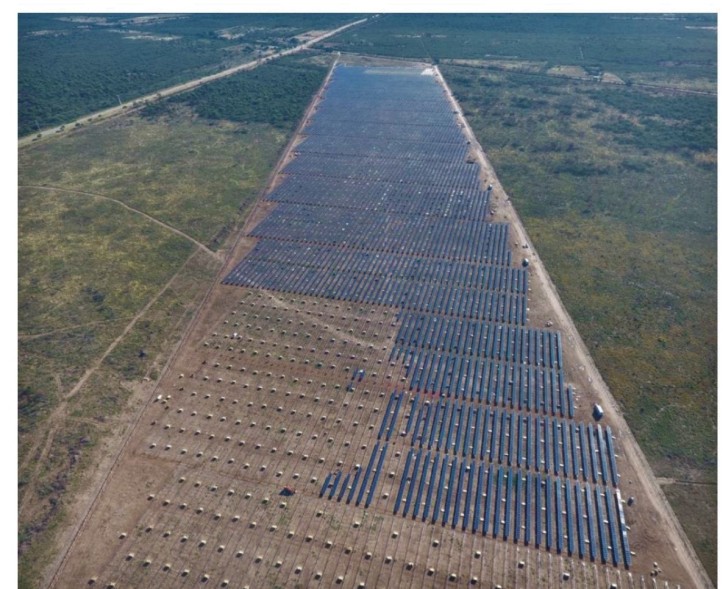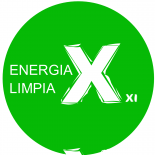
As we move to the second half of 2018 from some countries already hold the lead in terms of utilization of renewable resources. Solar is the fastest growing in much of Latin America a mixture of prices, resources and good governance policies.
Liederazgo Renewable / CLEAN ENERGY XXI. In Latin America energy reforms have been implemented over the past five years have resulted in an exponential development of sustainable renewable energies mainly sun, happened to be the cheapest and globally accessible renewable technology.

Solar energy is so important that in countries like Colombia is part of a new program called Paza Stream, which brings light and hope to areas that for years were obscured by armed conflict and drug trafficking. Colombia ranks first in Latin America and No. 8 worldwide in renewable energy as Global Performance Index Power Architecture (AEFI) World Economic Forum for the fifth year ranks the performance of energy systems of countries and notes trends in global energy transition. The country is ranked 8 in the world rankings and is the first non-European nation to appear in the top 10. Clean Energy XXI noted that there have been projects to generate 12,000 megawatts of energy from more than 3,000 sources which use wind and solar.
Argentina advances

Argentina which had remained indifferent and apathetic to renewable revolution, has begun to break the ice and promote solar energy. Since 2016 it takes 147 projects awarded in 21 provinces totaling nearly 4500 MW. Concessions made by the Department of Energy and the National Mining, 41 are solar projects, 34 wind, biomass 18, 14 small hydroelectric, biogas 36 and 4 biogas relleno.En Jujuy, for example, there is a 100% solar village that has demonstrated the change that has been gestating in Argentina. The country expects to generate in a couple of years 8% of its national energy matrix using renewable sources.
On the other hand countries like Chile that in 2012 the country had only 5MW solar power today they have more than 362MW and 873 MW under construction and planning.
EYE. Chile leads the solar revolution in Latin America with huge investments and a solid legal framework for domestic and foreign enterprises Green Tech Media (GMT), said that Latin America was the region that showed increased growth of solar energy in 2014, generating 625 MW, representing a growth of 370% over the previous year.
Among the countries in the continent, Chile is leading the incorporation of this type of energy. According to the website Clean Energy XXI, the report notes that “with its strong market for large-scale services, Chile led the region in photovoltaic installations in 2014, representing more than three-quarters of all Latin America.” He adds that only “in the fourth quarter Chile installed twice the amount of total annual Latin America in 2013.
Most important, the study found, is that Chile began in 2013 with only 11 megawatts of installed solar capacity. The speed with which the country has progressed has positioned itself as a leader in the region over Mexico and Brazil, in terms of growth.
Clean Energy XXI data indicates that Chile has invested more than USD 7,000 million in the development of renewable projects over the seven years pultimos also include biomass, hydropower, wind.
The government of former President Michelle Bachelet approved more than 80 solar and wind projects since he took office.
Renewable energy is now cheaper than electricity sold on the spot market in Chile and, at a time when it is estimated that it will increase global demand for copper, so will the demand for energy in the mines of the Atacama Desert. Besides operating solar power plants and enter the system soon exceed 1,400 MW in the near future.
In 2013, investment in renewable energy in 26 countries in Latin America and the Caribbean amounted to 14,000 million dollars, of which 94 percent (13.000 million) corresponded to Brazil, Chile, Uruguay, Mexico and Peru, according to the Climatescope 2014.
Mexico for example this year has opened the final phase of one of the largest solar plants in Latin America. Aura Solar I settled in Baja California Sur in a record time of seven months and from September 2013 began converting sunlight into alternating current, which already reaches part of the country. This year, the plant will open in full, generating clean energy to feed millions of Mexicans. Its facilities occupy 100 hectares of the Industrial Park of La Paz. Clean Energy XXI emphasizes that 131,800 Aura Solar plant cells reduce pollution by 60 thousand tons of CO2 per year.
Also countries like Peru are promoting the use of solar energy. The challenge for the sector is bringing energy to 2.2 million Peruvians in rural areas through grid extension and unconventional solutions such as solar panels, for which will begin awarding a project financing, installation, operation and maintenance up to 500 thousand solar panels.
Central America also shows important progress
In Panama, 31 companies participated in the first tender for the procurement of large-scale solar power last year. Ivan Barria, General Manager of the Electricity Transmission Company (ETESA) said “through this tender of 66 MW is encouraging private investment in renewable energy that will result in about 120 million dollars’. This year the National Secretariat of Energy of Panama reported that nine solar parks could be developed in the short term, three of them in Chiriqui and six in Cocle.
Guatemala has one of the largest photovoltaic plants in the region with 5MW of power and about 20 thousand solar panels. This week Eduardo Font, general manager of the paper industry PAINSA said they plan an investment of 12 million in a solar plant of 8 MW. The country has also increased household use of solar energy. Small hotels explore different alternatives for generating energy irradiation, as reported by the Association of Small Hotels of Guatemala (Asopehgua).
El Salvador. The German Development Bank (KFW) gave El Salvador a loan of 30 million dollars for loans to small and medium enterprises, mainly solar renewable energy. The Government of El Salvador and three electric power companies signed four contracts for the production and supply of 94 megawatts of solar power by an amount close to 250 million dollars. Power will be supplied by companies UDP Neoen-Almaval (60 megawatts); Solar Reserve Development (20); and UDP Project Trinity, the report Clean Energy XXI.
Honduras is the country leader in solar throughout Central America and the third in growth in Latin America. He soon established a dozen solar plants in Choluteca and other regions of the country. Its growth is admirable despite being a small country growing their investment in the sector is beginning to change things.
Costa Rica. In 2013 China and Costa Rica signed agreements for 30 million dollars to finance the installation of 50,000 solar panels. In addition earlier this year, the Costa Rican Electricity Institute (ICE) announced the progress of a pilot plan for the use of residential solar energy aims to reach 600 thousand customers. In the last 7 years we have been invested 1.700 million dollars in various projects renewable solar energy, wind, hydroelectric and others. Several companies in Costa Rica have started introducing solar projects to ensure more favorable production costs and reduce environmental pollution.
Nicaragua: In Nicaragua hospitals are installing solar panels, like Hosptial nuvo Dávila Bolaños, Universities and Supermercados La Colonia signature. In 2013 Nicaragua inaugurated a 1.3MW solar plant with support from Japan and this year built a 3.1MW plant with technology firm Canadian Solar. Also for signature HMV PIONEER authorized studies for the construction of a solar generation in the department of Chinandega which could produce 100 megawatts of power. Youth and women driving a solar revolution in Nicaragua. CABEI, the German bank KfW, Japan and IDB drive small solar projects that are generating big changes.

